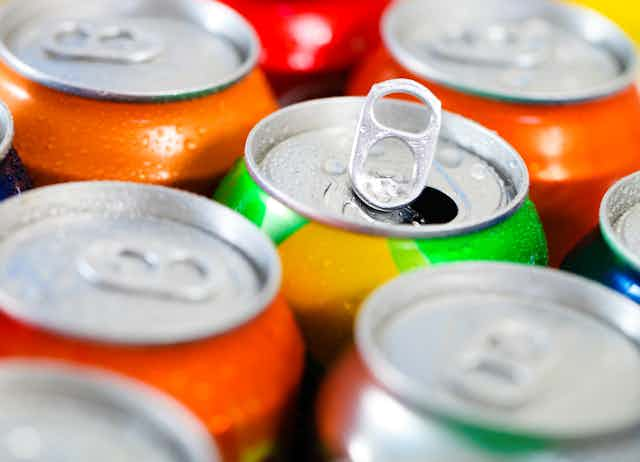If South Africans don’t drastically reduce the number of cool drinks, juices and sugar-sweetened beverages they drink every day, there will be more than nine million obese adults in the country by 2017.
Just three years ago, the country hit the mark of eight million obese people, making it the most obese nation on the continent and joining the likes of global heavyweights such as Mexico and the US.
The 2017 projection, captured in our study, means there will be 1.2 million more obese adults in South Africa. And more than one-quarter of these people will be obese because of the sugar sweetened beverages they drank.
These drinks are not the only reason for the increase in obesity. But because they are high in sugar and contain no essential nutrients, they are a significant contributor. For adults, drinking just one of these beverages a day increases the likelihood of being overweight by almost 30%.
For children, this risk increases to more than 50%. Other factors that contribute to obesity and overweight are eating fast food or processed food on a regular basis and not exercising.
Across the country, sugar-sweetened beverages result in one death every hour. Lifestyle diseases related to obesity, which can result in stroke, blindness, amputations and kidney failure, not only shorten one’s lifespan but also affect their quality of life. These deaths and disabilities place a major financial strain on families and on the already overburdened healthcare system.
If preventive measures are not introduced it is highly likely that people will drink more and more sugar-sweetened drinks over the next few years.
Tackling the fat problem
The South African National Department of Health has set a target of reducing the number of people who are obese or overweight by 10% by 2020. Its strategic plan for non-communicable diseases identifies several cost-effective preventive interventions to achieve this.
One of these is a tax on unhealthy products like a sugar tax. This would mean that the cost of cool drinks would increase, making them less affordable.
But in addition to a sugar-sweetened beverage tax, a complete package of interventions is needed for the greatest impact on obesity reduction. Other measures include:
food advertising regulations;
easy to understand food labelling; and
work site and school based interventions.
The government could also subsidise healthy products. Ideally this should be accompanied by strong education campaigns about the dangers of excessive sugar consumption.
Although the national strategic plan acknowledges the need for a set of interventions including a sugar tax, specific regulations have not yet been passed.
But lessons can be learned from Mexico – one of the most obese countries on the planet.
For almost a decade, the Mexican soft drink industry spent millions blocking efforts to reduce soda consumption. But impressive public health campaigns and demands for interventions led to a National Prevention and Control Strategy in 2013 and the implementation of a soda tax in January 2014.
By 2015, soda sales had decreased by 10% and people were drinking more water.
Consumers have little choice
There is an overwhelming perception that if consumers are educated, they will make good choices. But currently food and beverage choices are shaped by availability, affordability and most importantly relentless marketing. The food and advertising environment in South Africa makes it increasingly difficult to make healthy choices.
Currently, higher-income groups drink more sugar-sweetened beverages. But this is likely to change as the industry has started to target lower-income groups, who are more vulnerable.
The largest soft drink bottler in the country is clear about its intentions to aggressively grow its reach within the poorest sector of the population. The growth strategy will be driven by marketing and advertising to connect particular brands with aspirations and passions. This will place an already vulnerable population at even greater risk for obesity-related diseases, and will be exacerbated by existing poor access to quality disease screening and health care.
The impact on children is even worse. One study shows that although many of the leading brands in the country have committed to marketing that promotes healthy choices for children, half of the sugar-sweetened beverage billboard advertising in Soweto is deliberately close to schools with nearby vendors providing convenient access.
In both the formal and informal convenience stores, locally known as spaza shops, these products are also strategically placed to ensure the most profitable and high-sugar ones are at eye level and easily accessible.
Levelling the playing field
Consumers are persuaded to make unhealthy choices through the use of tactical marketing techniques and strategic placement and availability of unhealthy products.
The playing field needs to be levelled with interventions that nudge people to make healthier choices. In the absence of such measures, South Africa is headed towards a future with unprecedented rising healthcare costs, and deaths and disabilities from obesity-related diseases.

